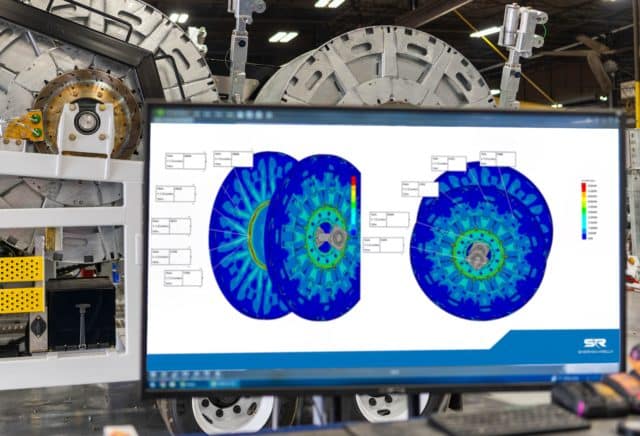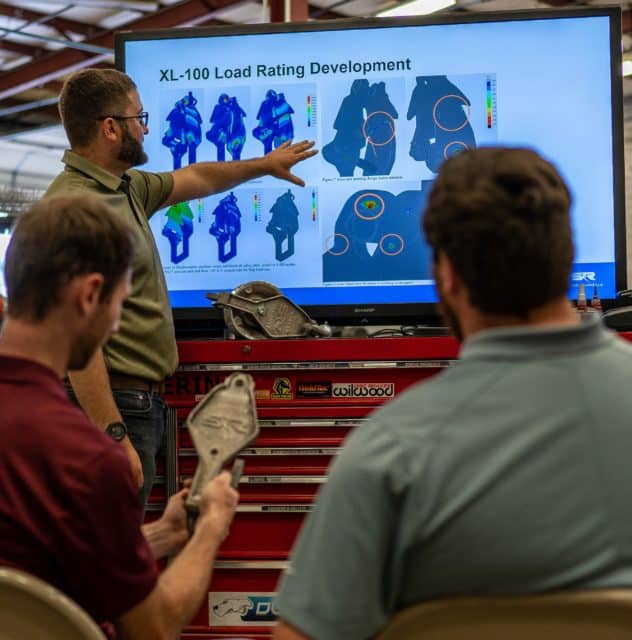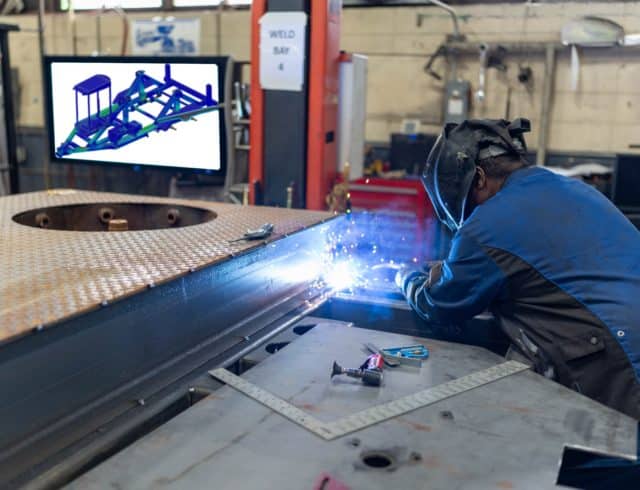WHAT IS FEA AND WHY IS IT IMPORTANT?
FEA stands for Finite Element Analysis. At Sherman+Reilly, FEA is a computerized modeling process the engineering
department uses to check the structural integrity of new equipment designs. The process involves taking the 3D computer
model of the new design and conducting analysis on various structural frame members within the model. This is done by
breaking the model geometry into smaller sub-sections in what is called a Finite Element model or “FE” model where the
actual analysis calculations will take place.
For example, in a static stress analysis, FEA uses material properties to calculate stiffness values for these structures and
volumes based on material stiffness. FEA determines material displacements given the boundary conditions applied by
the analyst. Secondary calculations are then completed to determine stress and strain in the model. This is known as FEM
or Finite Element Method. It is important to understand that this is a general method which can be applied to more than
just structural analysis. The Sherman+Reilly engineering team can use FE models to analyze static and dynamic structural
integrity, heat transfer, and fatigue life for example.
FEA allows Sherman+Reily engineers to analyze models accurately and efficiently for stress, strain, and displacement.
FEA is a powerful tool and while the methods used in FEA can be replicated with hand calculations, Sherman+Reilly utilizes
modern computer processes to quickly arrive at calculations that would otherwise take weeks or months to complete.
The biggest advantage of FEA is the ability to solve complex problems. Most problems the Sherman+Reilly engineering team faces are 
members can analyze the behavior of very small portions of the model, using a new set of assumptions, and sum these behaviors into a realistic representation of real-world applications.
WHY DOES SHERMAN+REILLY DO FEA?
In modern engineering and science, it is understood that hand calculations and presumptions regarding precedent often introduce unnecessary error and uncertainty. Processes can be used to determine the level of reliance on FEA based on the nature of the part(s) involved and the confidence of the design engineer. Sherman+Reilly utilizes FEA as a tool to ensure our designers are creating safeequipment which meets or exceeds customers’ expectations. Our touchstone “designed for safety, built to last” is a part of every step of the process.
DO CHANGES AND REVISIONS COME FROM THE FEA PROCESS?

WHAT IS THE PURPOSE OF PROTOTYPING A NEW UNIT?
Prototyping is extremely important for any new design. It is a measuring stick for the design engineer and product management team. Prototypes help determine if it is feasible to adhere to the project requirements and to limits put on a project before a full investment is made.
DOES OUR FEA PROCESS HAVE A LONG-TERM, MEANINGFUL IMPACT ON THE DURABILITY OF OUR UNITS?
FEA is validated via mechanical testing methods on our test field as well as in real-world use, and gives us meaningful insight into the strength of a design and appropriate knowledge of materials. It also allows us to better understand the durability of our products throughout their lifetime. As with any tool, the outcome of any FEA is a product of assumption as well as experience and good engineering judgment and diligence is always required – regardless of the tools used. The FE Analysis of our equipment is stored long-term on our servers should a future failure require a review of past FEA to determine the root cause.

Sherman+Reilly has been in business for going on 100 years, and that’s due to a combination of great ideas, great engineering, and great production. We’ve been building line-stringing equipment for over 40 years. Finite Element Analysis is a tool that helps to make our products safer and more durable.
We’re serious when we say: DESIGNED FOR SAFETY. BUILT TO LAST. And that we are dedicated to bringing every lineman home, every night. NO EXCEPTIONS.
